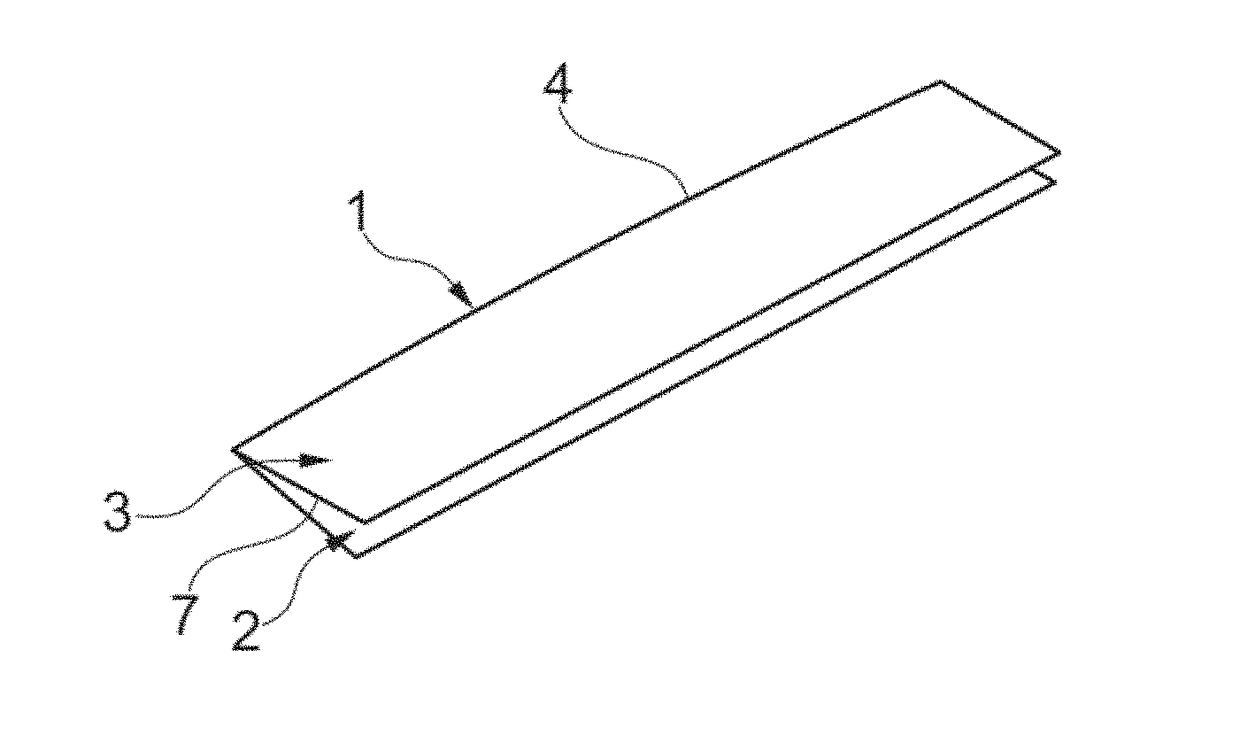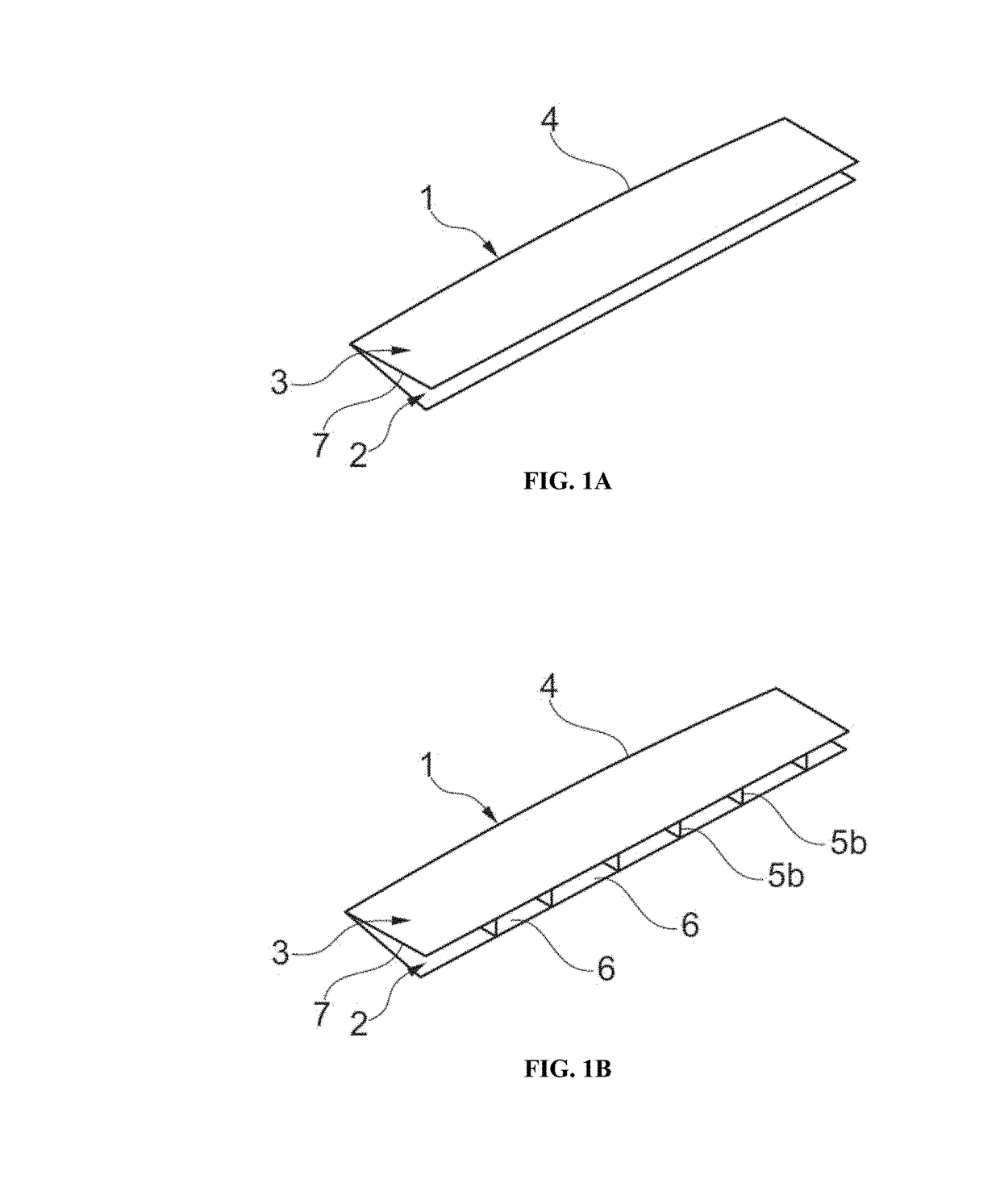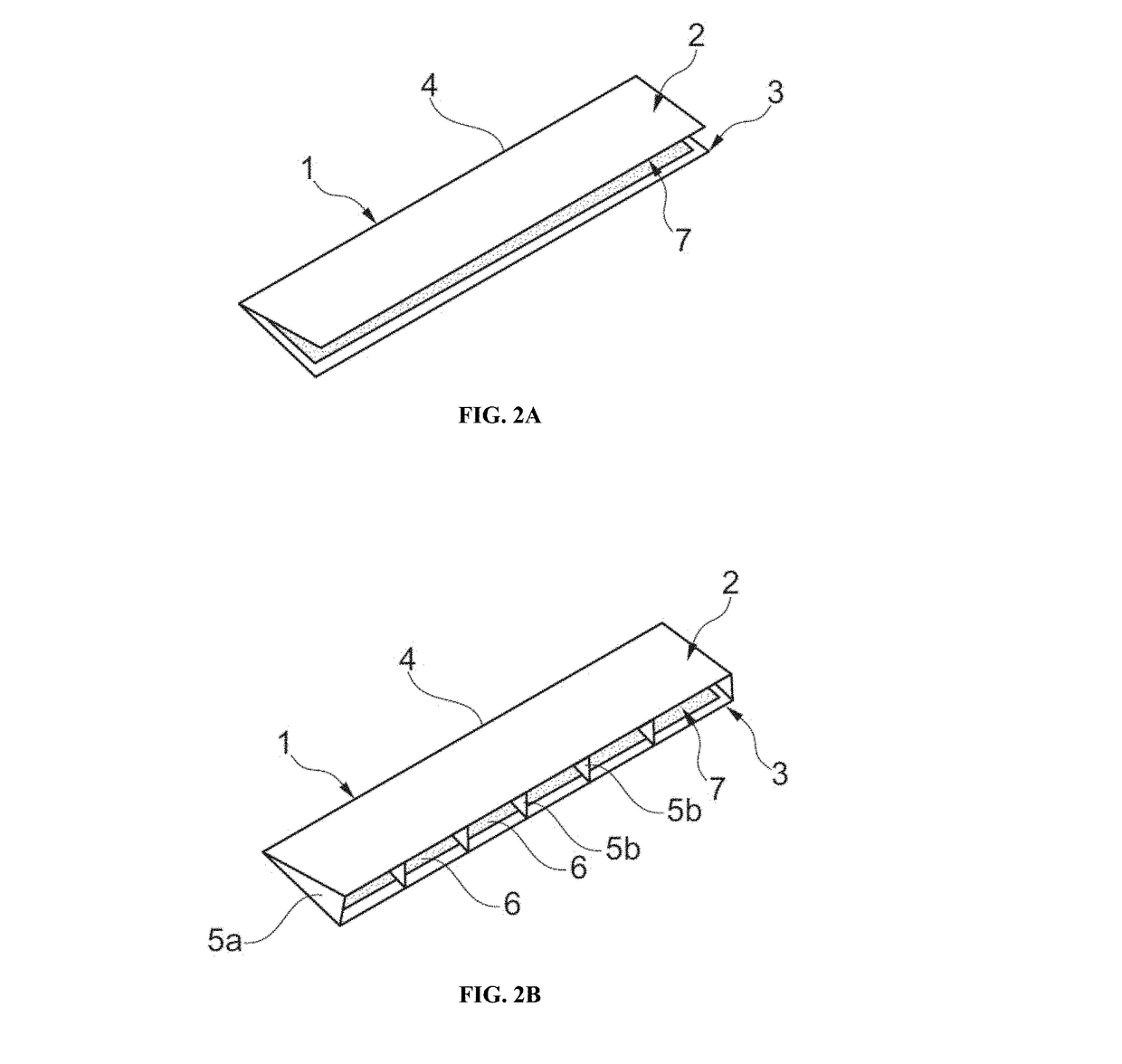Ecdysozoans trap
a trap and ecdysozoan technology, applied in the field of ecdysozoans traps, can solve the problems of time-consuming, expensive, and difficult work with existing technologies, and achieve the effects of reducing the risk of ecdysozoans, and reducing the number of traps
- Summary
- Abstract
- Description
- Claims
- Application Information
AI Technical Summary
Benefits of technology
Problems solved by technology
Method used
Image
Examples
example 1
Rugosity Test
[0175]Material et Methods
[0176]A plexiglass plate comprising areas sanded with different densities of sandpaper (4000, 3000, 2000, 1000, 400, 280, 120, 80 and 60 grains / cm2) was used. Sandpaper of 4000 grains / cm2 provides a very fine sanding, while sandpaper of 60 grains / cm2 leads to important scratch on the plexiglass plate. The ease of bedbugs to travel on each sanded area was observed. Then the capacity of bedbugs to climb on the support when it is tilted was investigated.
[0177]Results
[0178]Bedbugs have great difficulty moving through plexiglass areas sanded with sandpapers of 4000 to 1000 grains / cm2 (they slide). However, the more the density decreases, the more bedbugs have facility to move, which is reflected by an increase of their travel speed. When the plexiglass plate is tilted, bedbugs are not able to hold onto and slide along the plexiglass areas of 4000 and 3000 grains / cm2. From 2000 grains / cm2, bedbugs are able to hold on to the support even vertically.
[01...
example 2
Roof Coated with Double-Sided Adhesive Tape
[0180]Material et Methods
[0181]The trap used in this experiment is as represented in FIG. 1. The sloping roof was coated with double-sided adhesive tape (AXTON®) on its interior surface. The trap is 135 mm length and 15 mm width, and the opening of the trap is 1.5 mm high. The trap comprises 9 walls, 2 external walls and 7 internal walls, delimiting 9 interstices of 15 mm in length.
[0182]This trap was placed in a plastic tray of 30×20 cm, of which the bottom was sanded with sandpaper. Fifteen bedbug individuals (5 males, 5 females and 5 nymphs of all stages) were placed in the tray. The number of individuals glued to the double-sided adhesive tape was noted after 15 hours.
[0183]Results
[0184]After 15 hours, 73% of the males, 80% of the females, and 68% of the nymphs were caught into the trap, i.e. irreversibly glued on the roof of the trap.
example 3
Evaluation of Double-Sided Adhesive Tape as a Repellent
[0185]This experiment aims to determine whether the double-sided adhesive tape is not repellent for bedbugs.
[0186]Material et Methods
[0187]The experimental procedure is the same as example 3. In addition to the test trap containing double-sided adhesive tape coated on the interior surface of the roof, a control trap without double-sided adhesive tape was placed in the plastic tray vis-a-vis the test trap.
[0188]Results
[0189]Results show that bedbugs equally sheltered in the test trap (with adhesive tape) and in the control trap (without adhesive tape). Therefore, double-sided adhesive tape is not repellent for bedbugs.
PUM
 Login to View More
Login to View More Abstract
Description
Claims
Application Information
 Login to View More
Login to View More - R&D
- Intellectual Property
- Life Sciences
- Materials
- Tech Scout
- Unparalleled Data Quality
- Higher Quality Content
- 60% Fewer Hallucinations
Browse by: Latest US Patents, China's latest patents, Technical Efficacy Thesaurus, Application Domain, Technology Topic, Popular Technical Reports.
© 2025 PatSnap. All rights reserved.Legal|Privacy policy|Modern Slavery Act Transparency Statement|Sitemap|About US| Contact US: help@patsnap.com



